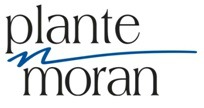
Contact: Dan Artman, Plante Moran, 248.223.3469
Southfield, Mich., Aug. 14, 2014 – As college and university administrators welcome students back to campus, Plante Moran has released “New Ideas for Higher Education 2014-15.”
The 28-page report taps into the expertise of several leading voices in higher education to explore some of their key issues, including accreditation, governance, shared services, technology transfer and consolidations. Told through a combination of Q&A and case studies, the report blends real-world experience with best practices to provide practical recommendations.
Plante Moran, one of the nation’s largest certified public accounting and business advisory firms, connected with the Higher Learning Commission, Central Michigan University, Oakland County Information Technology and Innovation Alliance to prepare the “New Ideas for Higher Education 2014-2015” report. “No one has to tell higher education leaders that times are changing,” writes Vicki VanDenBerg, Plante Moran practice leader for higher education. “Many institutions are struggling to control costs while maintaining enrollment. When student debt sits at an unprecedented $1 trillion, it is time to find ways to become more nimble and to change ‘business as usual.’
“Institutions must look for innovative solutions to modify legacy costs or divest obsolete programs that are failing to provide strong performance measures. True forward thinkers must look for alternative revenue streams and programs.”
“New Ideas for Higher Education” features extensive interviews and analysis on five major areas, including:
• Accreditation: J. Lee Johnson, a CPA and college administrator, notes that the accreditation process has changed significantly over the past 15 years since he became actively engaged as a peer reviewer with the Higher Learning Commission of the North Central Association. The advent of MOOCs – massive open online courses – along with distance learning, unbundling the role of faculty, the rise of the for-profit model and changing patterns of participation have conspired to fundamentally change the way that colleges and universities face the accreditation process. While Johnson, a senior vice president of business and finance at Siena Heights University, suspects a national accreditation process could be in the future, he doesn’t see the current peer review model going away – just giving rise to new metrics and standards.
• Governance boards: As a peer reviewer, Johnson knows that in order to understand an institution, he needs to look at their board minutes to see if they are setting the right direction, asking the right questions and understanding the mission. He points to a list of 10 habits of highly effective boards created by Richard Legon, president of the Association of Governing Boards of Universities and Colleges, that advise creating a culture of inclusion, upholding fiduciary principles, considering strategic risk factors and focusing on accountability as tools for success.
• Shared services: Phil Bertolini is a big believer in the power of shared services. As chief information officer and deputy county executive of Oakland County, Mich., he has seen firsthand the power – and the cost savings – inherent in the shared-services model and encourages colleges and universities to explore the possibilities. Bertolini says that higher education leaders should inventory what services they have and evaluate what they need from a cost-benefit perspective as they begin the process. He recommends they also evaluate their team, determine if they have a realistic plan and develop a governance process. “Governments learned a very important lesson during the lean years and, rather than going back to the old days, they are learning to work with less and get more done,” Bertolini says. “With student debt reaching epic proportions in our country, it is only a matter of time before higher education institutions are challenged with looking at shared services as a critical cost-saving measure.”
• Commercialization and technology transfer: While colleges and universities have been increasingly engaged with technology transfer for the past three decades, Tom Harper says that there are several key strategies that will allow them to be faster and more efficient at the process. A senior manager in Plante Moran’s restructuring, operations excellence and supply chain management consulting practice, Harper says that institutions need to be aware of industry-specific commercialization requirements, such as quality systems in the development of medical devices, on the front side of technology transfer programs. Harper also recommends becoming an easy-to-work-with partner, creating a culture of entrepreneurship and communicating effectively.
• Consolidation: To merge or not to merge remains an increasingly important question for higher education leaders. While many focus on the numbers, Plante Moran says there are other factors to consider when looking at consolidation, including the difficulty of merging two different missions and cultures without alienating constituents in either community. Perhaps equally as important is defining a new, consolidated brand that respects institutional history while creating a unique position in the market.
“While no one has a crystal ball, it isn’t hard to see that a revised business model for higher education might include partnerships with other institutions – even those outside of academia,” VanDenBerg says. “There are certainly many arguments for and against running a higher education institution like a business, but most would agree that with today’s constrained resources, there’s an urgent need for more communication and idea sharing among diverse stakeholders, including faculty, staff, administrators and trustees.”
ABOUT PLANTE MORAN
Plante Moran is among the nation’s largest accounting, tax and consulting firms and provides a full line of services to organizations in the following industries: manufacturing and distribution, financial institutions, service, health care, private equity, public sector and real estate and construction. Plante Moran has a staff of more than 2,000 professionals in 21 offices throughout Michigan, Ohio, and Illinois with international offices in Shanghai, China; Monterrey, Mexico; and Mumbai, India. Plante Moran has been recognized by a number of organizations, including FORTUNE magazine, as one of the country’s best places to work. For more information, visit plantemoran.com.


